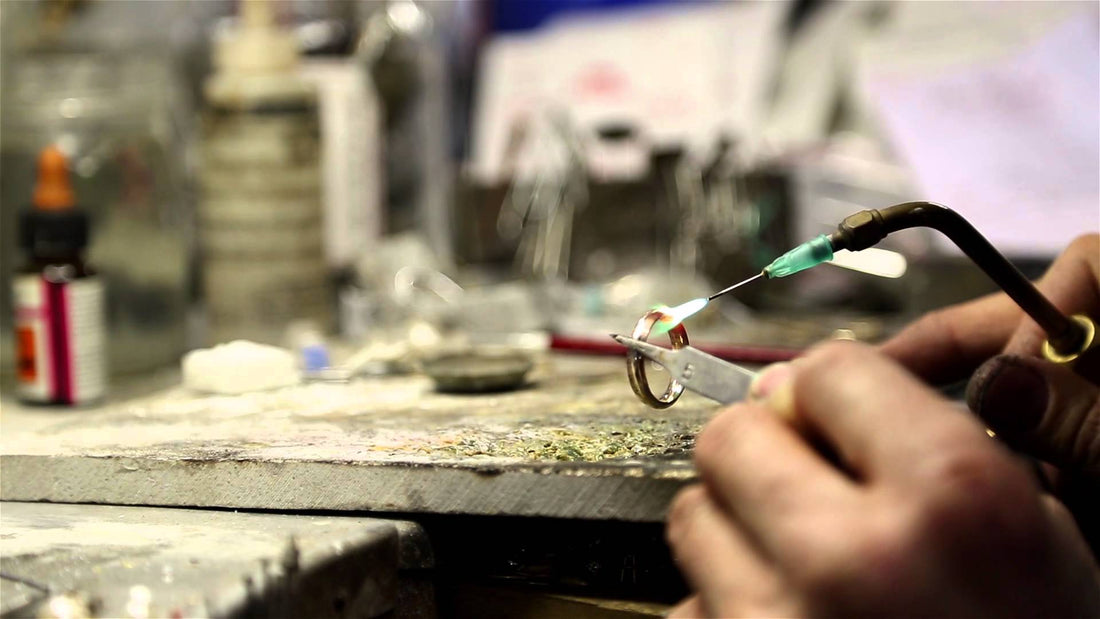Working in the jewelry industry for most of my adult life, I’m still surprised to find out the most women don’t know what quality metal their jewelry is made of. Fortunately, the answer to this question doesn’t have to remain a mystery. Jewelry comes in a variety of different materials which affects the price, quality and longevity of your favorite pieces. Here, I’ll outline the difference between the most common metal types so know exactly what it is you’re spending your precious dollars on.
Base metal
Base metals include aluminum, copper, brass, iron, nickel, and titanium. They are the least expensive to manufacture and tend to oxidize or corrode relatively easily. This means that the metal usually becomes discolored, especially if it comes in contact with water and generally has a lifespan of a few months at most.
If you’ve ever shopped at fast fashion stores, then you likely have a few pieces of jewelry made from base metals in your closet. Forever 21, Primark, and H&M are popular ones, however, don’t let the price tag fool you. Just because a piece of jewelry is priced higher, doesn’t always mean it’s higher quality. People are often shocked to hear that companies like J crew, Anthropologie and Alex and Ani frequently use base metals to manufacture their designs which are often plated over brass. Next time you are shopping online, take a moment to read the fine print and become a more knowledgeable consumer.

Photo Source: Anthropologie.com
Sterling Silver
Sterling silver is not a base metal and is instead categorized in a group called Noble metals which are rare, possess a high surface luster and are resistant to corrosion. Noble metals include silver, gold, and platinum. What separates sterling silver from gold and platinum is generally the strength of the metal and cost. Sterling silver is much more affordable and perfect for everyday pieces.
All sterling silver is required by law to have a hallmark, or stamp, of .925. You might have seen this on your jewelry before but wasn’t sure what it meant. In simple terms, it represents that the metal is 92.5% pure silver, and 7.5% metal alloys (usually copper).
The reason silver needs to be combined with other metals is that it is very difficult to make great designs with just pure silver, which is very soft and malleable. A bit of hardness has to be introduced, by adding other metals.
Sterling will last forever if you take care of it. I have a few of my grandmother’s vintage sterling silver and turquoise rings from the seventies that my mom passed down to me that are still in great shape.
Ironically, wearing your jewelry often, may be one of the best ways to keep it looking beautiful and reduce tarnish buildup. Silver doesn't tarnish if it's constantly polished, which is exactly what you're doing if you’re wearing it. Fun fact: tarnishing happens in microscopic layers, and if you keep rubbing the layers off before they can build-up, then it's not noticeable.
The easiest and most inexpensive way to clean sterling silver jewelry is with polishing cloths. You can buy then on Amazon for less than $5. To protect sterling silver jewelry that you don’t plan on wearing often, I recommend keeping in a sealed plastic bag with an anti tarnish strip.
We only sell sterling silver jewelry at Wyllo because it’s durable and affordable which makes it the perfect investment for everyday pieces. Since many of our designs feature semi precious gemstones, it’s important to choose a metal that will last a lifetime.
You'll also see yellow or gold plated sterling jewelry, also known as vermeil, in our collections. These pieces have a very thin layer of gold applied over silver. Fortunately, unlike plated base metals, you have the option of bringing your sterling silver pieces to a jeweler to have them re-plated with gold. This is perfect, if you want to restore gold plated sterling silver pieces that were handed down to you.
Gold and Platinum
Gold and platinum are the highest quality and most expensive fine metal and are generally reserved for engagement rings and wedding bands.
The main distinguishing physical characteristic between gold and platinum is color. While platinum is naturally white, gold is naturally yellow. White gold is also an option which involves dipping yellow gold into a rhodium plating. Sometimes women will find that their white gold wedding band might start to turn a bit yellow after five to ten years of wearing it. This is generally an easy fix that involves taking your ring to a jeweler to be re-rhodiumed for around $50. When yellow gold is mixed with a copper alloy, it gets a rosier hue, which is known as rose gold.
Some other characteristics worth noting is durability. If you’re choosing a metal to hold a $10,000 diamond, the obvious choice will be platinum or gold, since engagement ring designs commonly feature thin prongs and you’ll want to do everything in your power to ensure your gem is kept safely in place. Platinum tends to be the stronger of the two and is also hypoallergenic which is appealing to those who might struggle with metal allergies.
The care of gold and platinum differs from sterling silver. While polishing helps, the easiest way to clean 14k or 18k gold or platinum is to take it to a jewelry store and ask them to clean it with an ultrasonic machine. Most of the time, jewelry stores will offer to clean your jewelry for free, even if you didn’t purchase it there. Just make sure you don’t put your sterling silver pieces in an ultra sonic, since the chemicals will cause it to oxidize, however, a jewelry professional should be equipped to tell the difference and avoid that from happening in the first place.
I hope you found this breakdown helpful as you search for your favorite pieces. If you have any follow up questions about different metal types, feel free to email info@shopwyllo.com.
Alyssa is the creator + curator of Wyllo. Before pursuing her passion project, she has studied at GIA and spent half a decade working in the jewelry industry.


